HOME | FAMILY | CONDUCTING | SINGING | USU | STEINER | STANFORD | PHOTOS
26th AMENDMENT SIGNING | MEMORIES | YOUTUBE VIDEOS
The Telephone in My Youth
While telephones were a part of many households in our youth, some had "crank" phones which hung on the wall. The crank was used to contact the "operator" who would ask which number you wished to call.
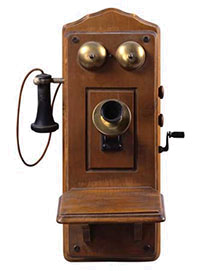
Vintage "hand-crank" phone
Because we lived "in town" we had a more modern phone without the crank.

This phone was our only telephone when I was young
The method used to call another party was to pick up the "receiver" from the cradle (there was only one phone in the house) and the "operator" would say, "Number, please?" Our town was small and it was not uncommon for me to say, "Please call my Daddy." Also, most homes in my town had what was known as "party" lines - more than one household would "share" the same line. It was impossible to make a call while another person was using the line and you could hear the conversation taking place on the "party" line if you happened to pick up the phone while it was in use. It was not uncommon to ask another "party" if they would please hang up so that you could make a call.
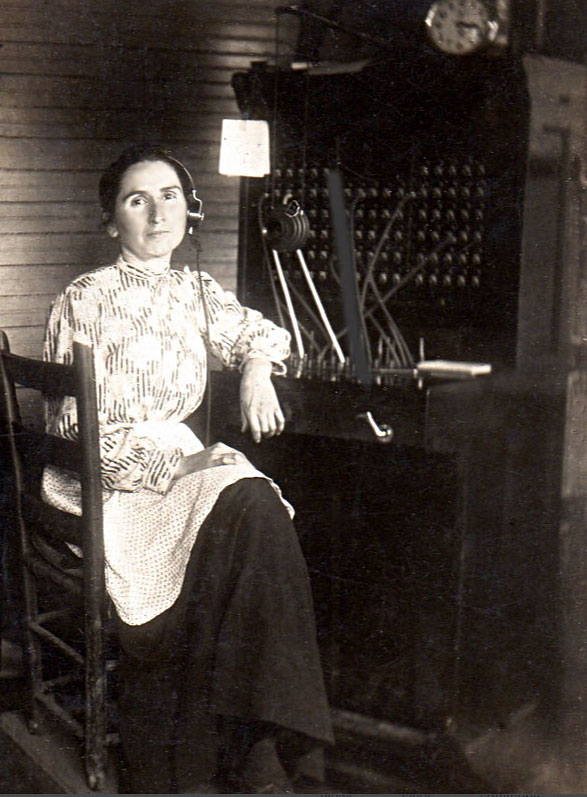
My Maternal Grandmother, Nora Gilliam Judd, Telephone Operator
I first saw this photo in the summer of 2023! Thank you Bruce Jasper!
I also remember phone numbers: my Grandparents' telephone number was 48 (there was no area code), my Dad's work number was 361. The local funeral home's number was 1.
To make a "long distance" call, you would tell the operator the city, state, and number you wished to call. If it was a "person-to-person" call (which was much more expensive) you would also state the name of the party you wished to contact. Generally, the operator would say that she (it was always a woman) would call you back when the connection was made - anywhere from a few minutes to more than an hour.
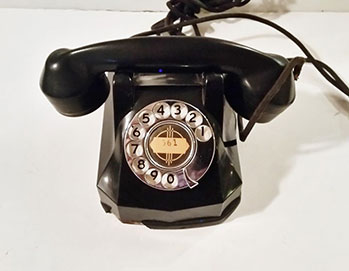
We eventually had this as our one house phone
When we got "new and improved" phones with a rotary dial, the telephone company published instructions as to how this new-fangled device was to be used. The following is directly from the phone book of 1953 (when I was 15 years of age.)

How to Operate the Automatic Telephone
Good telephone service is as dependent on proper telephone usage as it is on proper telephone equipment. Therefore we kindly request that you read the instructions covering proper telephone usage in the following paragraphs.
The "DIAL" on your telephone contains ten circular openings large enough to admit the tip of the index finger. Back of the dial is the "NUMBER PLATE" containing numbers 1 to 0 inclusive. The numbers, or a combination of them, make up the various numbers as they appear in the Telephone Directory.
"THE DIAL TONE" is a humming sound indicating that the line is clear and that the Central Office equipment is ready to receive the number to be called.
The "RINGING SIGNAL" is an intermittent purring sound indicating that the telephone of the number called is being rung.
The "BUSY SIGNAL" is a rapid interrupted buzzing sound indicating that the line called is busy.
Consult the telephone directory and obtain the telephone number of the party with whom you desire to communicate.
How To Use The Dial Telephone
Remove the receiver and when you hear the dial tone keep the receiver off the hook and proceed as follows:
Place the tip of the index finger of either hand firmly in the opening in the "DIAL" over the first digit of the number you are calling.
Then rotate the "DIAL" clockwise until your finger strikes the "FINGER STOP."
Don't fail to pull the dial clear around to the finger stop for each figure of the number you are calling.
Remove your finger and without touching the dial allow to return to its normal position.
Perform the same operation with each of the other digits in the number you are calling.
If your finger slips, or you make a mistake in dialing, hang up the receiver at once, wait a few seconds, and dial again. Before making a second call, always hang up the receiver for a few seconds in order to clear the previous connection.
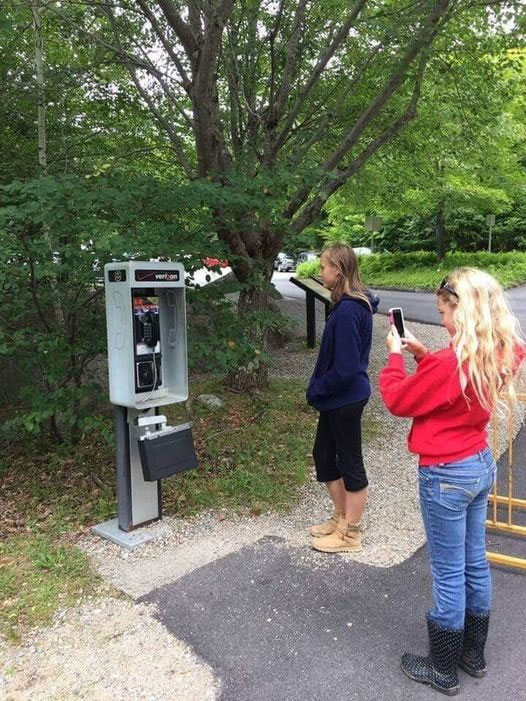
Kids taking historical photos of an obsolete pay phone
Watch a young mellennial attempt to use a dial phone
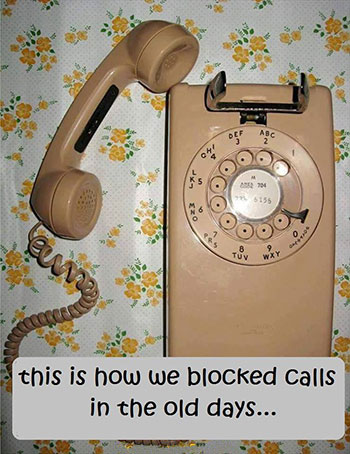
At least, we never misplaced our phone!
When we were kids we made "string phones" with discarded soup cans with holes punched in the closed end of the can. We then would tie a string (usually, we would used kite string) through the hole and into the can at the other end of the string. We then would stretch the string tight and we could communicate with the person on the other end of the string phone. It worked (almost) but we had a lot of fun. Today, I suppose, kids just text each other.

String phone
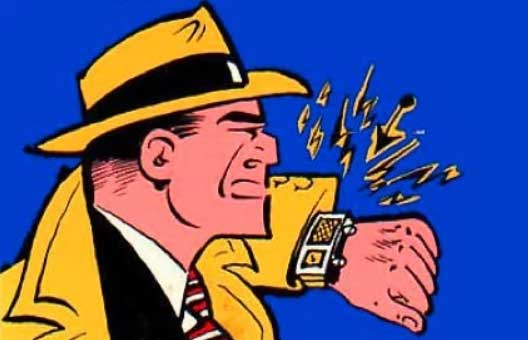
Dick Tracy Watch
Of course, we could never forget the amazing invention in the 1946 Dick Tracy comic strip. This amazing bit of fiction actually allowed a detective to use a two-way wrist radio! This could NEVER happen in "real life." Right?
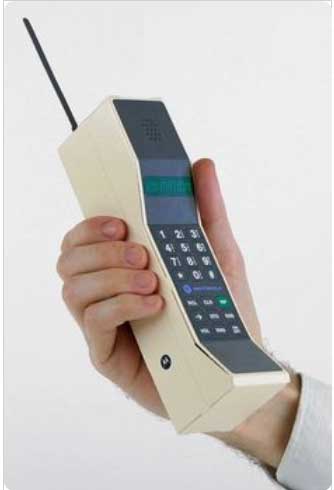
Early "cell" phone
The first wireless (cell) phones were much later. If my memory is correct, I believe that the first time I ever saw one was while we were in Hawaii for a Music Educator's National Conference. A man had what appeared to be a very large shoe box in his hand holding it next to his ear.
Those early cell phones were heavy and bulky. We didn't think they would last. There were even television comedy shows that spoofed them.

Maxwell Smart (played by Don Adams)
on Get Smart in the late 1960s
Little did we know that in the near future, not only would we be able to own tiny wireless phones, but that the phone would also include a highly sophiticated computer as well as still and video cameras, AND an Apple Watch? Never.
